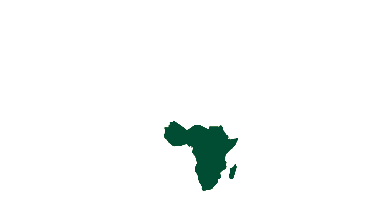Case study
2024 • Fondation 2iE Energy recovery from cashew nut waste in Burkina Faso
The SWITCH Africa Green-supported project aimed to develop an alternative energy source for micro, small, and medium enterprises (MSMEs) in Burkina Faso by utilizing cashew nut waste. The initiative, implemented in Bobo-Dioulasso and Ouagadougou, focused on producing fuel briquettes from cashew nut shells as a sustainable replacement for firewood and charcoal. This helped combat deforestation, improve energy access, and support green business practices. The project also trained MSMEs on waste-to-energy conversion and fostered networks among green businesses, further advancing sustainable consumption and production.
Recovered Materials & Products
Solid fuel
Waste Streams
Food processing by-products
Confirmed countries
United States of America


Background and context
The project is based in Bobo-Dioulasso and Ouagadougou, Burkina Faso, where cashew nut waste is being transformed into a sustainable energy source. The region faces significant challenges, including high deforestation rates due to reliance on firewood, limited access to modern cooking fuels, and a general lack of awareness about alternative energy solutions.
Approach
The project employs innovative waste-to-energy solutions, primarily through the production of fuel briquettes from cashew nutshells. Implementation involved constructing a pyrolysis reactor using locally sourced materials, training over 500 micro, small, and medium enterprises (MSMEs) on sustainable energy solutions and the integration of waste-to-energy practices into their business operations and facilitating networking opportunities among green businesses to enhance collaboration and knowledge-sharing in sustainable energy. The initiative was supported by key stakeholders, including Fondation 2iE, Stichting Woord en Daad, UNEP, and Burkina Faso’s Ministry of Environment.
Outcomes and impacts
Over 80 MSMEs engaged in the use of briquettes from cashew nut waste as an energy source and trained with knowledge and skills about techniques in briquette production. Additionally, 50% of the trained MSMEs successfully transitioned from firewood to briquettes, reducing their reliance on traditional biomass. By repurposing cashew nutshells, the initiative has addressed waste disposal challenges while strengthening the cashew value chain by adding value to what was previously discarded. More broadly, the project contributed to environmental sustainability by lowering dependence on firewood, which in turn helps mitigate deforestation.
Lessons learned
The initiative successfully demonstrated the viability of using agricultural waste for energy production, creating new income-generating opportunities for MSMEs and establishing a model that can be replicated for other agricultural waste streams. However, challenges remain, particularly the limited knowledge among MSMEs regarding pyrolysis reactor technology, which has slowed adoption. Additionally, scaling up production requires larger-capacity reactors, and financial constraints hinder access to energy-efficient production equipment. To enhance scalability and replicability, expanding the project to other agricultural sectors with high waste production and establishing shared reactor facilities for MSMEs can improve accessibility and sustainability.
Learn more
The case study was extracted from the publication linked below: United Nations Environment Programme, United Nations Development Programme, & United Nations Office for Project Services. (2021). Recovery of waste from the Cashew Nut Sector as a Renewable Energy Source for MSMEs in Burkina—SWITCH Africa Green.
https://wedocs.unep.org/handle/20.500.11822/34884
Technologies
Pyrolysis
Themes
Capacity building
Technologies